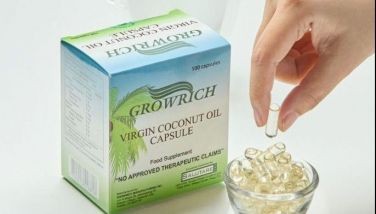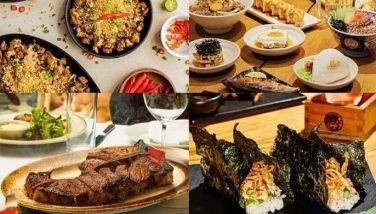Glimpses of Old Cebu
CEBU, Philippines – Most people come to Cebu mainly for its white beaches and beautiful diving spots. Well, the city’s Sinulog Festival in January is also a major attraction. But, of course, it’s not only this big fiesta that pulsates with color and energy or the outskirts adventures that make Cebu interesting.
In fact, to truly appreciate Cebu one has to go beyond the obvious. While the city is one of the country’s bustling modern centers, the place has a rich heritage trail. Its Colon Street and Parian district elicit nostalgia. Its Carbon market bustles in traditional ways of commerce.
It may be even safe to consider the old Cebu area as a living, breathing museum itself. It may surprise a casual traveler to discover that there’s a lot more attractions here than what’s usually being vigorously promoted.
Just quick glimpses at this historic city:
Colon Street. Cebu’s Colon area is a maze of decades-old buildings, Chinese shops, and jeepney stops. It is quite a sight to behold. Formerly the main commercial center of Cebu, from the 50s through the 90s, Colon provides the roots to Cebu’s rise as the Queen City of the South.
The street is lined with old buildings of a hodgepodge of architectural influences. The fast modernization in the last few decades has not really obliterated the characteristic traces of the business district of old. Art deco-inspired edifices can still be found, almost making it hard for the modern structures to find their place amidst the area’s organized chaos.
Colon is the oldest street in the Philippines. It is also where the city’s oldest supermarket and department store stands to this day, having become an icon of Cebuano pop culture. The name “Colon” itself has since come to refer to the entire area and the network of streets nearby.
Parian District. Parian is the original epicenter of trade and commerce in old Cebu. The area is where Cebu’s rich and famous used to live. Even today Parian is an important place for visitors to Cebu to stop by. It is home to several museums and historical landmarks. It is a gateway of sorts to life in old Cebu.
The Heritage of Cebu Monument stands at the center of the district’s network of Spanish colonial houses and buildings, some of which have been converted into museums. The Monument depicts Cebu’s story, from the first time the Spaniards set foot on the island to the city’s rise as a bustling metropolis.
Just nearby are two museums, virtually just a stone’s throw away from each other. The first one is the 1730 Jesuit House or the Museo Parian. The unique thing about this museum is that it is hidden within a warehouse compound, making it somewhat difficult to spot, save for the modest signboard outside. The second museum is the Yap-Sandiego Ancestral House, a roughly 300-year old house owned by one of Cebu’s wealthy Chinese-Mestizo families. It is one of the very few well-preserved Spanish Colonial houses that open their doors to the public.
A short distance away is the Casa Gorordo, another well-preserved Spanish Colonial house typical among the affluent families in those days. The exhibit of antique household utensils and furniture in the museum speak of the way of life of the Cebu of old. Up towards the Cebu Metropolitan Cathedral area is another museum – the Cebu Cathedral Museum. It is another fascinating place as it houses a vast collection of religious artifacts and antique church items from all the churches throughout Cebu province. The building itself used to be the convent of the old Cebu Cathedral.
Adjacent to the spot is the Basilica Minore del Sto. Nino, which is a main point of religious interest. Around the Basilica compound are stalls selling sculpted images of the Holy Child, an attraction in itself. The famed Magellan’s Cross is just a few steps away.
Carbon Market. For its outburst of life especially on glorious afternoons, Carbon Market is not for the faint of heart. Trading in the area, which has swelled to the neighboring streets and districts, is really raw, at times totally lacking in the graces and niceties of inter-personal relations. But Carbon is where to go for goods and curios that only sell for a song. The displays of various merchandise and fresh produce make a very colorful picture, literally.
It is said that one finds everything in Carbon, from piles of dried fish to mountains of vegetables that sell for less than half the price that they are being sold in supermarkets. Those with tough stomachs may sample the street food at stalls that proliferate in the area; it may just turn out to be some exciting gustatory adventure.
Carbon is a cacophony of sights, scents, and sounds best experienced and explored on foot. Just in any place anywhere fast-paced and crowded, one must keep a close watch on personal belongings.
There’s a lot more to Cebu than visitors often discover. Some secluded street or district may yet hold something really interesting and nostalgic. But for visitors coming on limited time, those three areas will already provide a substantial “Old Cebu” experience.
- Latest



























